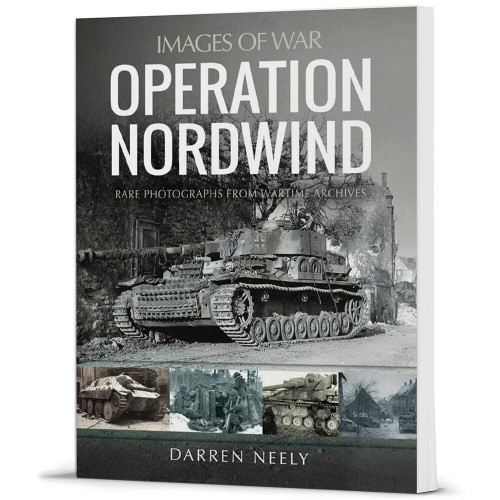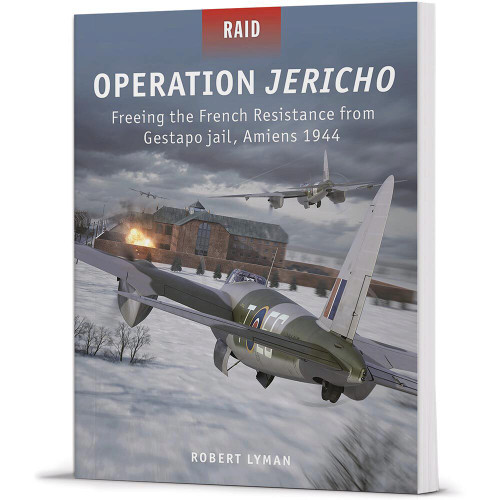Features
- Dimensions: 7.5" wide x 9.75" tall
- 176 Pages
- 200 images & illustrations
Neely. Operation Nordwind was the last major German offensive of World War II on the Western Front. It began on 31 December 1944 in Rhineland-Palatinate, Alsace and Lorraine in southwestern Germany and northeastern France, and ended on 25 January 1945. Normally overshadowed by the Battle of the Bulge, Nordwind battles were just as intense and the troops involved faced the same bitter weather conditions and battle conditions their fellow units did to the north. The goal of the offensive was to break through the lines of the U.S. Seventh Army and French 1st Army in the Upper Vosges mountains and the Alsatian Plain, and destroy them, as well as the seizure of Strasbourg, which Himmler, who had been placed in charge, had promised would be captured by 30 January. The campaign also showcased the difficulties of inter-Allied cooperation between the Americans and the French. The U.S. VI Corps—which bore the brunt of the German attacks—was fighting on three sides by 15 January. By 15 January at least 17 German divisions (including units in the Colmar Pocket) from Army Group G and Army Group Oberrhein, including the 6th SS Mountain, 17th SS Panzergrenadier, 21st Panzer, and 25th Panzergrenadier Divisions were engaged in the fighting. Another smaller attack was made against the French positions south of Strasbourg, but it was finally stopped. Vicious battles at Hatten and Rittershoffen, Gambsheim and Herrlisheim took place and while the Germans could not employ near the same amount as armor as they did in the Ardennes, the armor engagements were nonetheless ruthless. The American 12th Armored Division lost almost an entire tank battalion in the battles in and around Herrlisheim. Action would engulf the entire front and areas like Strasbourg, Wingen, the Colmar Pocket and Haguenau would be ingrained in the minds of the troops that fought in these battles.




